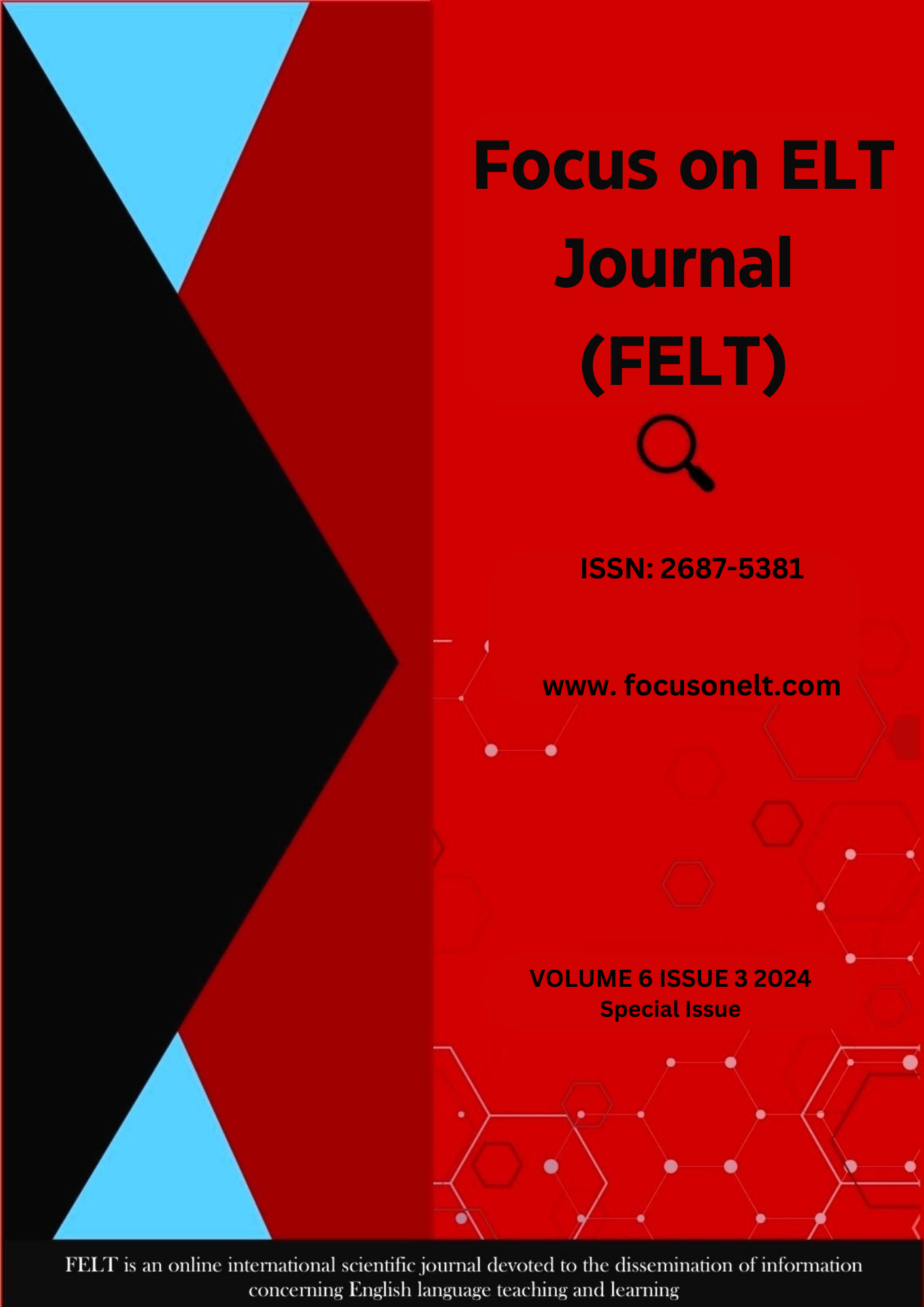Preface to the special issue “Exploring the intersection of Sociolinguistics and English language teaching (ELT): Navigating diversity, dynamics, and discourse”
Main Article Content
Abstract
The articles in this issue are organized into three main categories. The first category (Aslan & Nazlı, 2024; Brown, 2024; Hauber-Özer, 2024) emphasizes the value of sociolinguistic awareness through engaging tools, reflective practices, and supportive frameworks that enable learners to navigate social and cultural landscapes. The second category (Correia, 2024; Fidan et al., 2024; Abi & Gürbüz, 2024) discusses policy and pedagogical adjustments necessary to meet the realities of multilingual contexts, advocating for practices that prioritize intelligibility and intercultural skills. The final category (Demirkol Orak, 2024; Przymus & Mendoza, 2024) addresses how cultural dimensions and individual differences shape language learning experiences, underscoring the role of cultural awareness in fostering equitable and supportive classroom environments. Together, these articles provide a multidimensional view of ELT, offering educators and policymakers insights for supporting linguistically and culturally diverse learners in today’s globalized world.
Metrics
Article Details

This work is licensed under a Creative Commons Attribution-NonCommercial-NoDerivatives 4.0 International License.
References
Abi, M., & Gürbüz, A. (2024). Language, culture, connection: The medium of instruction and intercultural communicative competence. Focus on ELT Journal, 6(3), 93-104 https://doi.org/10.14744/felt.6.3.6
Aslan, K., & Nazlı, E. H. (2024). A case study with sponge bob through sociolinguistics: Improving the English Language Learning awareness in young learners. Focus on ELT Journal, 6(3), 1-15. https://doi.org/10.14744/felt.6.3.1
Brown, B. (2024). Journaling about interaction: Metacognition around language learning. Focus on ELT Journal, 6(3), 16-35. https://doi.org/10.14744/felt.6.3.2
Correia, R. C. (2024). Can Portuguese language policy keep up? Balancing the sociolinguistic tightrope and the rise of ELF. Focus on ELT Journal, 6(3), 50-75. https://doi.org/10.14744/felt.6.3.4
Demirkol Orak, S. (2024). Comparison of individual differences and Hofstede’s culture layers. Focus on ELT Journal, 6(3), 105-123. https://doi.org/10.14744/felt.6.3.7
Fidan, C., Mourchid, M., & Bouaissane M. (2024). Attitudes toward World Englishes and World Englishes-Informed pedagogies among prospective ELT teachers in Türkiye. Focus on ELT Journal, 6(3), 76-92. https://doi.org/10.14744/felt.6.3.5
Hauber-Özer, M. (2024). English as access for Syrian refugee students in Turkey. Focus on ELT Journal, 6(3), 36-49 https://doi.org/10.14744/felt.6.3.3
Przymus, S. D., & Mendoza, M. E. (2024). We “barely” wrote this paper: Sociolinguistic relativity in Southwestern U.S. schools and its impact on English language teaching. Focus on ELT Journal, 6(3), 124-147. https://doi.org/10.14744/felt.6.3.8

